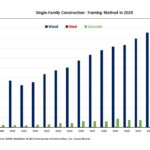This article is presented by Connect Invest. Read our editorial guidelines for more information.
The good news is that the inflation rate is on the decline. The bad news is that it still exceeds the Federal Reserve’s target rate of 2%. As a result, the Federal Reserve announced last week that it will maintain the current interest rate of 5.25% to 5.5%.
In a statement, the central bank noted:
“Economic activity has continued to expand at a solid pace. Job gains have remained strong, and the unemployment rate has remained low. Inflation has eased over the past year but remains elevated. In recent months, there has been modest further progress toward the Committee’s 2% inflation objective.”
The Fed now predicts just one rate cut for 2024, a disappointing decision for investors expecting multiple rate cuts for the year.
However, there’s some positive news for investors: Several inflation-resistant investments are available that can help diversify and protect portfolios. We’ll explore these investment options and how they can offer stability in uncertain economic times.
Understanding Inflation and How to Hedge Against Its Impact on Your Investments
Inflation serves as a crucial economic indicator, showing the rate at which the price we pay for goods and services increases over time. This metric is essential for guiding our financial decisions, from everyday purchases to significant investments.
Mastering the skill of investing during times of inflation is a fundamental skill for all investors. As inflation rates rise, the value of money diminishes, and portfolios that lack inflation-resistant investments will gradually lose their value. Different asset classes respond in various ways to inflation, underscoring the critical importance of portfolio diversification.
While market fluctuations and inflation are inevitable aspects of the economy, they should not lead to an unassertive approach to investing. Incorporating inflation-resistant assets into your portfolio is essential for maintaining its value and resilience against economic volatility.
Disciplined investors understand the importance of adapting investment strategies during times of high inflation. By investing in asset classes that perform well during periods of rising inflation, investors can enhance their portfolios’ strength and stability.
What Is an Inflation Hedge?
So, what is an inflation hedge? Essentially, it’s an investment that tends to perform well during periods of high inflation, providing a safeguard for portfolios against its detrimental effects. A portfolio designed to maintain its purchasing power and value during inflation typically includes assets such as stocks, real estate, and metals.
Almost every single aspect of life involves risk, requiring assessment and mitigation of these risks constantly—whether driving to work, crossing the street, or making lifestyle choices. Our daily risk assessment skills help us evaluate potential hazards and determine their impact on our lives.
Similarly, investors should strive to do the same risk assessments when diversifying their portfolios and considering inflation hedge investments. This approach helps ensure investor portfolios remain robust and resilient among varying economic conditions.
The Best Inflation Hedge Investments
Every investment comes with a varying degree of risk, but some inflation-resistant investment options offer a stronger safeguard against inflation. Here are five of the best investments that can effectively hedge against inflation.
1. Treasury inflation-protected securities (TIPS)
Treasury inflation-protected securities (TIPS) are a type of U.S. government bond indexed to inflation, ensuring your investment principal adjusts in line with the Consumer Price Index (CPI). When the CPI rises, the bond’s principal increases correspondingly; if the CPI falls, the principal decreases accordingly.
Backed by the U.S. government, TIPS carry a similar low-risk profile as other government bonds. They offer a reliable strategy for protecting your investment against inflationary pressures.
2. Floating-rate notes (FRNs)
Floating-rate notes (FRNs) are bonds with variable interest rates, unlike fixed-rate notes with interest rates that remain constant. The interest rate on FRNs is tied to benchmark rates, such as the U.S. Treasury note rate or the Federal Reserve federal funds rate.
Commonly referred to as floaters, these notes are issued by financial institutions, governments, and corporations. Their maturities typically range from two to five years. Interest payouts can occur quarterly, monthly, semiannually, or annually. Due to their periodic adjustment to market rates, floating-rate notes are attractive to investors looking for an effective hedge against inflation.
3. Stocks/The S&P 500
Stocks can exhibit volatility, but their performance varies depending on the characteristics of the underlying company. Despite possible short-term fluctuations driven by investor sentiment, stocks can serve as an effective inflation hedge long term.
The critical determinant of a stock’s inflation hedge potential lies in its pricing power. Companies capable of increasing prices without significant consumer pushback tend to sustain profitability during times of inflation.
Businesses with low capital requirements often tend to thrive in inflationary environments. For example, technology and communication services constitute a substantial portion of the S&P 500 index and are generally capital-light sectors. Therefore, these industries are positioned to potentially benefit from inflationary conditions, making them favorable options for investors seeking inflation hedges.
4. Real estate
Historically, real estate has garnered a reputation as a low-risk investment, making it a compelling option for investors seeking strategies to strengthen their portfolios during periods of inflation.
When considering real estate as an inflation hedge, it’s essential to highlight three distinct methods to invest in the sector:
- REITs: Real estate investment trusts (REITs) represent companies that own and manage income-generating real estate assets. These entities operate as pools of real estate holdings, distributing dividends to investors based on income generated. Recent market trends underscore the inflationary impact on property prices and rental income, further solidifying the attractiveness of REITs as an inflation hedge.
- Rental properties: Income through rental properties is another excellent inflation-resistant asset class. During inflationary periods, rental rates typically rise in tandem with the overall increase in prices, resulting in elevated income for rental property owners, also known as landlords. This dynamic ensures rental property income aligns with inflationary pressures, making it an appealing option for investors seeking to mitigate the effects of rising prices.
- Short Notes: For investors seeking an inflation hedge in the real estate space but deterred by high entry costs, Short Notes offers a viable alternative with a minimum investment requirement of just $500. Investor funds are meticulously managed and allocated across a diverse portfolio of first-position, collateral-backed active real estate projects across the U.S., minimizing risk for investors. Fixed-rate, monthly passive interest payments make Short Notes attractive for investors seeking effective inflation hedges. Moreover, Short Notes’ relatively short investment periods (six to 24 months) make them a solid option for investors seeking inflation-resistant options.
5. Precious metals
Gold has long been hailed by investors as a haven asset, providing a significant hedge against inflation—increasing in value as the purchasing power of the dollar declines. Gold has long outperformed most other precious metals, including silver, platinum, and palladium. Although the value of gold has recently hit a record new high and has since stayed fairly consistent, remember that the value of gold, like other investments, fluctuates often.
Final Thoughts
Inflation remains a significant concern for investors despite growing optimism anticipating the gradual decline in interest rates. As inventors navigate economic uncertainty, prioritizing investments geared toward combating the harmful effects of inflation becomes essential. Whether opting for Short Notes as a hedge against inflation or diversifying portfolios with asset classes like stocks, gold, REITs, and bonds, investors must approach inflation hedges with diligence.
This article is presented by Connect Invest

Your connection to private real estate investing.
Connect Invest is an online investing platform that provides opportunities for short-term investments. These investments contribute to a diverse portfolio of real estate projects, encompassing both commercial and residential developments at various stages.
Note By BiggerPockets: These are opinions written by the author and do not necessarily represent the opinions of BiggerPockets.



